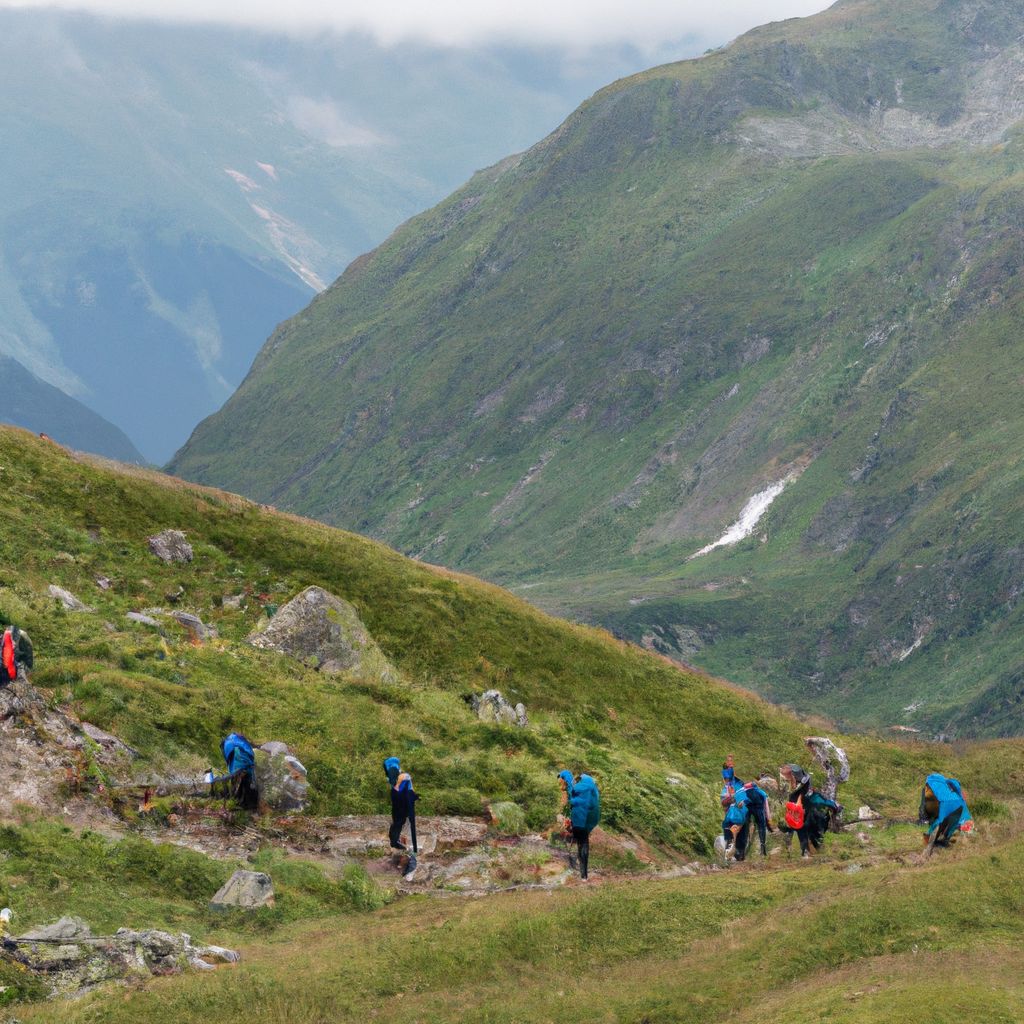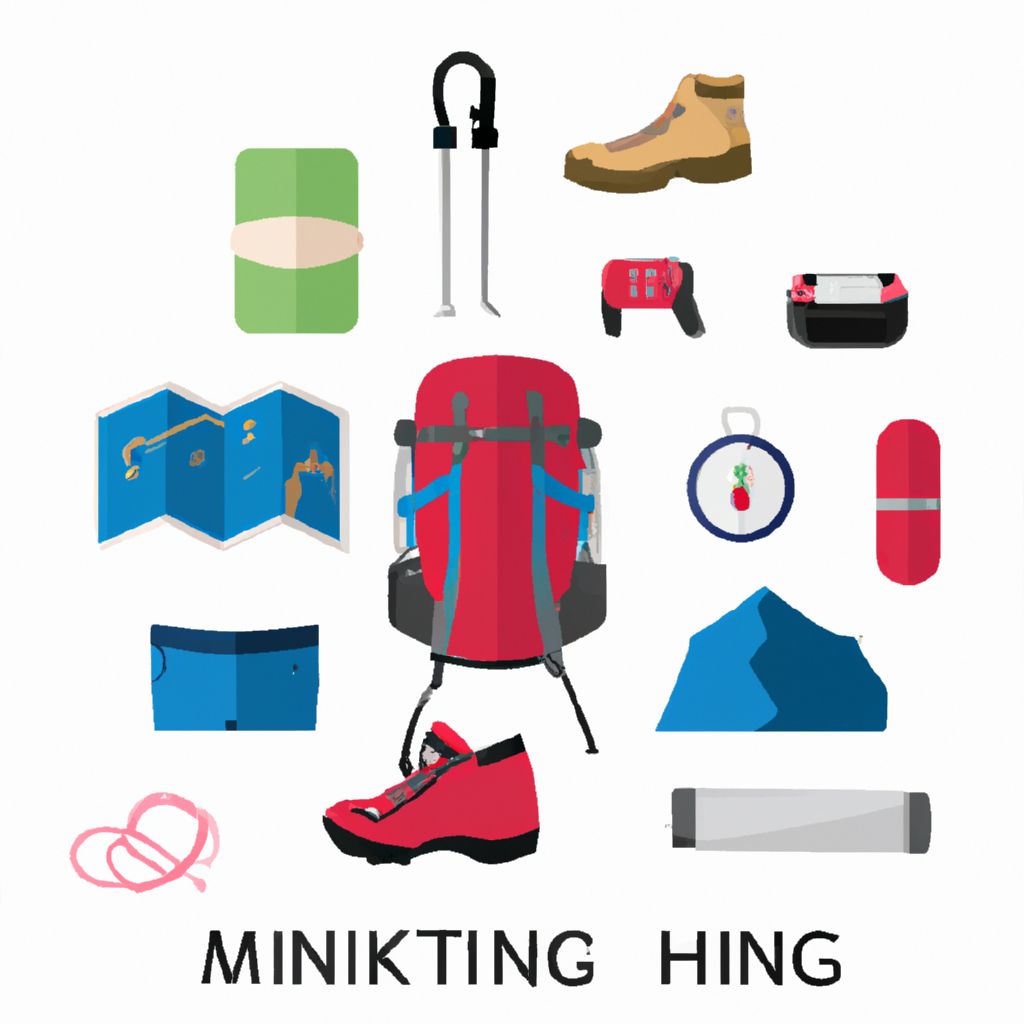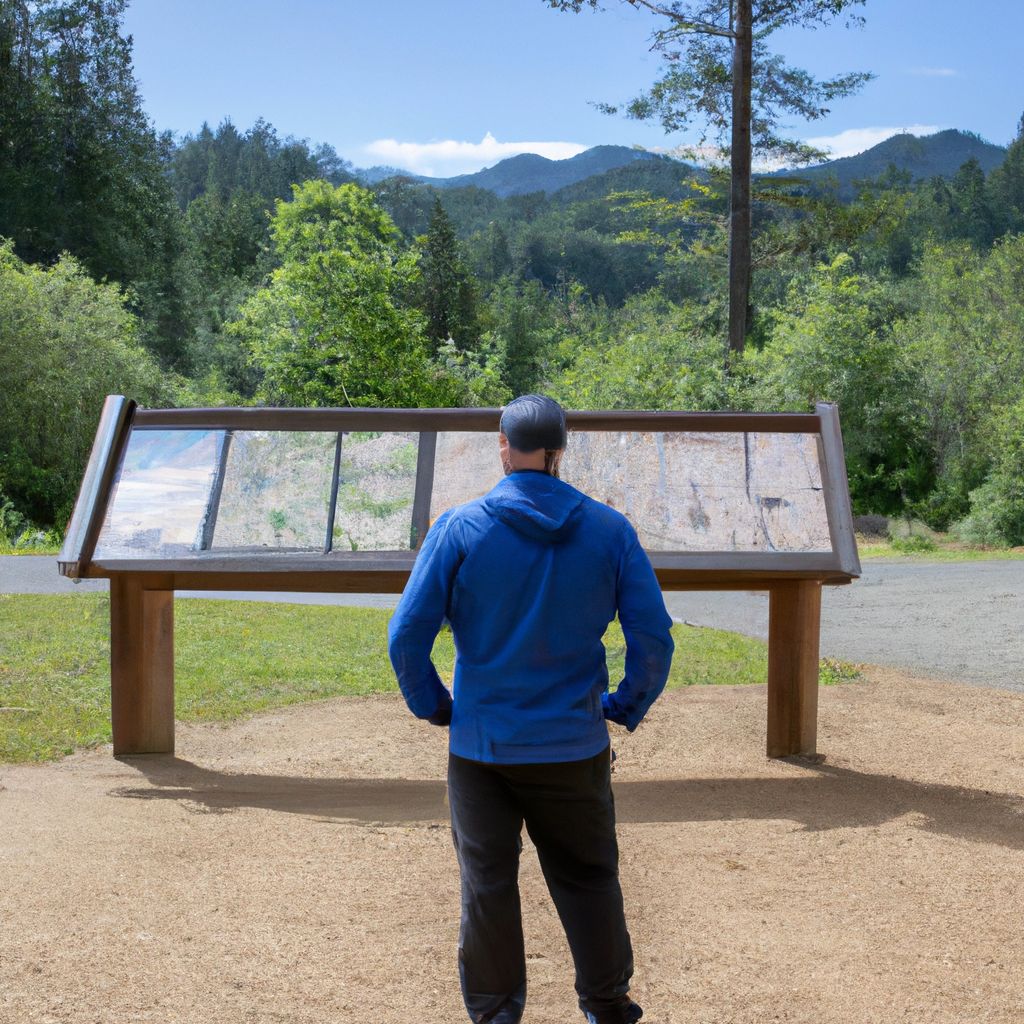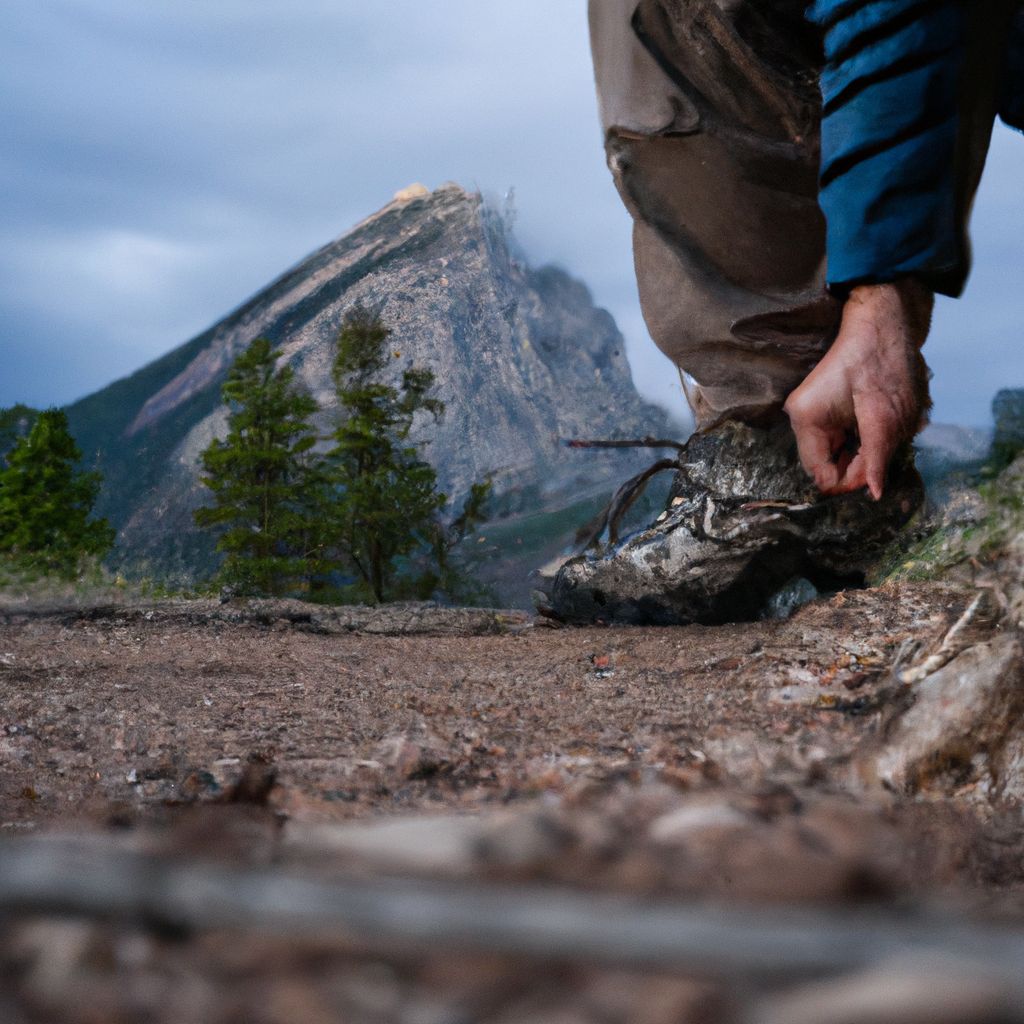- Introduction: The Thrill of Mountain Hiking
- Understanding Mountain Hiking: What It Entails
- The Different Levels of Mountain Hiking: Beginner to Advanced Trails
- Essential Gear You Need for Mountain Hiking
- Training for Mountain Hiking: Physical Preparation Tips
- Safety Measures for Mountain Hiking: Avoiding Hazards
- Choosing Your First Mountain Trail: Factors to Consider
- Respecting Nature: Responsible Hiking Practices
- Mountain Hiking Etiquette: Sharing the Trail with Others
- The Health Benefits of Mountain Hiking
- Popular Mountain Hiking Destinations Around the World
- Conclusion: Taking the First Step Towards Mountain Hiking
Introduction: The Thrill of Mountain Hiking

Mountain hiking is more than just an outdoor activity; it's an experience that encapsulates the thrill of adventure, the tranquility of nature, and the reward of physical exertion. The allure of the mountains has always been irresistible to many, presenting a challenge that combines both mental and physical strength. The panoramic vistas, the crisp clean air, and the sense of accomplishment upon reaching the peak are just a few of the exhilarating aspects of mountain hiking.
Statistics from the Outdoor Foundation reveal that in the U.S. alone, nearly 47.2 million people participated in hiking in 2017. This number has been steadily increasing as more people discover the numerous benefits of this activity. An article published in the Journal of Travel Medicine also substantiates these statistics, indicating a significant increase in the popularity of mountain hiking over the past decade.
Various experts in the field of fitness and health have also supported the benefits of mountain hiking. Dr. Aaron Baggish, associate director of the Cardiovascular Performance Program at Massachusetts General Hospital, states that "Mountain hiking helps you in building strength in your glutes, quadriceps, hamstrings, and the muscles in your hips and lower legs". It's a comprehensive fitness package, improving cardiovascular health, enhancing bone density, and even boosting mood.
The intention of this article is to provide an introduction to mountain hiking. From understanding the basic equipment to mastering hiking techniques, we will guide you through every step of your journey towards becoming a proficient mountain hiker.
Understanding Mountain Hiking: What It Entails

Mountain hiking, also known as hill walking, is an outdoor activity that involves walking in mountainous or hilly terrains. Unlike traditional walking or running, mountain hiking presents unique challenges due to variations in terrain, altitude, and weather conditions. It is a comprehensive activity that requires physical endurance, mental toughness, and a deep appreciation for nature's beauty.
Mountain hiking is not just about reaching the peak. It's about embracing the journey, which involves navigating through various terrains, appreciating the diverse flora and fauna, and facing unpredictable weather conditions. According to research conducted by the University of Innsbruck, mountain hiking can significantly improve cardiovascular health, reduce stress levels, and enhance overall well-being.
It's important to understand that mountain hiking requires a certain level of preparation and understanding. From appropriate clothing and footwear to navigation tools and first aid supplies, hikers must be well-equipped to ensure a safe and enjoyable hike. Expert hiker and author of 'The Ultimate Hiker's Gear Guide,' Andrew Skurka, emphasizes the importance of preparation, stating, "Preparation can make or break a hiking trip, especially in more challenging terrains like mountains".
In the following sections, we will delve deeper into what mountain hiking entails, including the necessary preparation, the required gear, and the essential skills for a safe and successful hike.
The Different Levels of Mountain Hiking: Beginner to Advanced Trails

Mountain hiking trails are generally categorized into three levels: beginner, intermediate, and advanced. These categories are determined by several factors such as trail length, elevation gain, trail condition, and technical difficulty. It's important to understand these categories to choose a trail that suits your fitness level and hiking skills.
Beginner trails are typically shorter, ranging from 1 to 5 miles, with minimal elevation gain. These trails are well maintained, clearly marked, and do not require any special hiking skills or equipment. Beginner trails serve as an excellent introduction to mountain hiking, helping new hikers to build their strength, endurance, and confidence.
Intermediate trails are more challenging, ranging from 5 to 10 miles, with moderate elevation gain. These trails may involve uneven terrain, stream crossings, and steep sections. Intermediate trails require a good level of physical fitness and some hiking experience. These trails offer more scenic views and provide a rewarding challenge for those looking to push their limits.
Advanced trails are the most challenging, often exceeding 10 miles, with significant elevation gain. These trails can involve rough terrain, steep ascents, and descents, and may require navigating through unmarked sections. Advanced trails demand a high level of physical and mental fitness, experienced hiking skills, and proper hiking gear. These trails offer the most stunning views and are often the goal of many avid hikers.
According to a study published in the Journal of Public Health, regular participation in outdoor activities like hiking can lead to a gradual increase in physical fitness levels, enabling hikers to transition from beginner to advanced trails over time. However, it's essential to respect the mountains and not to rush this progress. Patience and careful preparation are key in ensuring a safe and enjoyable mountain hiking experience.
Essential Gear You Need for Mountain Hiking

One of the fundamental aspects of mountain hiking is having the right gear. Proper equipment not only ensures comfort and safety but also enhances the overall hiking experience. Here's a list of essential gear that every mountain hiker should have:
- Hiking Boots: The importance of good-quality hiking boots cannot be overstated. They provide the necessary ankle support, traction, and protection against rough terrains. Choose boots that are waterproof, durable, and well-fitted.
- Backpack: A backpack is essential for carrying necessary items like food, water, clothing, and emergency supplies. Opt for a comfortable, lightweight, and weather-resistant backpack with multiple compartments for easy organization.
- Clothing: Dress in layers to accommodate changing weather conditions. Your clothing should be breathable, quick-drying, and suitable for the temperature. Don't forget a rain jacket, hat, gloves, and extra socks.
- Navigation Tools: Even on marked trails, having a compass and a map is crucial. GPS devices or smartphone apps can also be helpful, but remember that batteries can deplete or signals can be weak in remote areas.
- Water and Snacks: Staying hydrated and maintaining energy levels is critical during a hike. Carry enough water and high-energy snacks like nuts, dried fruits, and energy bars.
- First Aid Kit: A basic first aid kit with bandages, antiseptic wipes, tweezers, and pain relievers is a must-have for any hiking trip.
- Headlamp/Flashlight: In case you get caught out after dark, a headlamp or flashlight can be a lifesaver. Also, don't forget extra batteries.
- Multi-tool: A multi-tool can come in handy for a range of unexpected situations, from repairing gear to preparing food.
Remember, the type and amount of gear you'll need can vary based on the length and difficulty of the hike, weather conditions, and personal needs. As outdoor adventurer and author Brian Easton suggests, "Packing for a hike is a balancing act. You want to be prepared for anything without overloading yourself."
With the right gear, you can face the challenges that come your way on the mountain trails and enjoy a safe and satisfying hiking experience.
Training for Mountain Hiking: Physical Preparation Tips

Mountain hiking is a physically demanding activity that requires a certain level of fitness. While the sheer excitement of the adventure can get you started, it's your physical preparedness that will get you to the summit and back. Here are some tips to help you train for mountain hiking:
- Cardiovascular Training: Cardio exercises like running, swimming, and cycling can help build stamina, which is crucial for long hikes. According to a study in the American Journal of Medicine, regular cardio exercise can improve lung capacity and overall cardiovascular health, making it easier to cope with the low oxygen levels at high altitudes.
- Strength Training: Hiking involves several muscle groups, including the quadriceps, hamstrings, calves, glutes, and core. Exercises like squats, lunges, step-ups, and planks can help strengthen these muscles. As per the American Council on Exercise, strength training can also reduce the risk of injury during hiking.
- Flexibility and Balance: Yoga and stretching exercises can improve flexibility and balance, helping you navigate through uneven terrains and preventing falls.
- Practice Hikes: The best way to train for a hike is to hike. Start with short, easy trails and gradually increase the distance and elevation. This will help you get used to the physical demands of hiking and allow you to test your gear.
- Hydration and Nutrition: Stay hydrated and maintain a balanced diet. Hydration helps in muscle function and energy production, while nutrition provides the necessary fuel for your body.
- Rest and Recovery: Don't underestimate the importance of rest. Give your body time to recover after training to prevent overuse injuries.
Physician and avid hiker Dr. Paul Auerbach advises, "Begin your training at least eight weeks before the hike. The more time you give yourself, the easier it will be to build up your strength and endurance."
Remember, the goal of training is not just to reach the peak, but to enjoy the journey without undue strain or risk of injury. Happy training and happy hiking!
Safety Measures for Mountain Hiking: Avoiding Hazards

While mountain hiking can be a thrilling and rewarding experience, it's not without risks. Weather changes, rough terrains, high altitudes, and wildlife encounters are some of the potential hazards that hikers may face. Therefore, understanding and implementing safety measures is crucial to ensure a safe hiking experience. Here are some safety tips for mountain hiking:
- Plan Ahead: Research the trail, check the weather forecast, and understand the potential risks. Always inform someone about your hiking plan, including the trail you're taking and your expected return time.
- Stay on the Trail: Sticking to the marked trail is crucial for your safety. Going off-trail can lead to getting lost, damaging the environment, and encountering wildlife.
- Stay Hydrated and Nourished: Lack of hydration and nutrition can lead to fatigue, hypothermia, and altitude sickness. Carry sufficient water and high-energy food, and take regular breaks to refuel.
- Be Aware of Altitude Sickness: High altitudes can lead to decreased oxygen levels, leading to altitude sickness. Symptoms include headache, nausea, fatigue, and shortness of breath. If you experience these symptoms, descend to a lower altitude immediately.
- Prepare for Weather Changes: Mountain weather can be unpredictable. Dress in layers, carry rain gear, and protect yourself from the sun. If the weather turns bad, be prepared to turn back.
- Respect Wildlife: If you encounter wildlife, maintain a safe distance and do not feed or provoke the animals.
- Carry a First Aid Kit: A basic first aid kit can be a lifesaver in the event of minor injuries or ailments.
A report by the National Park Service stresses on the importance of safety in outdoor activities, stating, "Safety is a personal responsibility. Hikers need to assess their ability and preparedness honestly and make wise decisions."
By adhering to these safety measures, hikers can mitigate the risks associated with mountain hiking and ensure a safe and enjoyable experience.
Choosing Your First Mountain Trail: Factors to Consider

Choosing your first mountain trail can seem daunting, but with careful consideration of a few key factors, you can select a trail that not only matches your physical ability and hiking skills, but also provides an enjoyable and rewarding experience. Here are some factors to consider when choosing your first mountain trail:
- Trail Length: Consider how many miles you're comfortable hiking. Remember, you'll need to hike back, so ensure you're comfortable with the total distance.
- Elevation Gain: This refers to the total ascent you'll make during the hike. Higher elevations can be more physically demanding and can also lead to altitude sickness. For your first hike, choose a trail with a moderate elevation gain.
- Trail Difficulty: Trail difficulty is determined by factors like trail length, elevation gain, trail condition, and technical difficulty. Start with an easy to moderate trail and gradually progress to more difficult ones as your fitness level and hiking skills improve.
- Trail Conditions: Check the current trail conditions. Mud, snow, or fallen trees can make a trail more challenging. Look for information online or contact local park services for up-to-date trail conditions.
- Weather: Weather can greatly influence your hiking experience. Check the weather forecast and avoid trails with adverse weather conditions.
- Scenery: Choose a trail with scenery that you will enjoy. Whether it's a panoramic mountain view, a serene lake, or a dense forest, the beauty of the trail can add greatly to your hiking experience.
Rebecca Walsh, a seasoned hiker and founder of the outdoor blog 'Hike Like A Woman', advises beginners, "Don't push yourself too hard on your first hike. Choose a trail that allows you to enjoy the experience and fall in love with hiking."
Remember, the goal of hiking is not just to reach the destination, but to enjoy the journey. Choose a trail that brings you closer to nature and leaves you feeling invigorated and inspired.
Respecting Nature: Responsible Hiking Practices

As mountain hikers, we are privileged to enjoy some of the most stunning landscapes our planet has to offer. With this privilege comes the responsibility to respect and protect these natural spaces. Responsible hiking practices, often summarized as 'Leave No Trace' principles, are guidelines that every hiker should follow to minimize their environmental impact. Here's what you need to know:
- Plan Ahead and Prepare: Research your destination, understand the regulations, and prepare for varying conditions. An unexpected situation can lead to choices that harm the environment.
- Travel and Camp on Durable Surfaces: Stick to the established trails and campsites to avoid damaging plant life and causing soil erosion.
- Dispose of Waste Properly: "Pack it in, pack it out." Carry all your trash, including organic waste like fruit peels, back home and dispose of it properly.
- Leave What You Find: Do not disturb or remove natural features like plants, rocks, or historical artifacts. Leave them for others to enjoy.
- Minimize Campfire Impact: Use a camping stove for cooking. If you must have a fire, use established fire rings, keep fires small, and completely extinguish them before leaving.
- Respect Wildlife: Observe wildlife from a distance. Do not feed, approach, or disturb animals.
- Be Considerate of Other Visitors: Respect other hikers, keep noise levels down, and yield to other hikers on the trail.
John Judge, President and CEO of the Appalachian Mountain Club, emphasizes, "Responsible hiking practices are not just about preserving nature for its own sake, but also about ensuring that future generations can enjoy these beautiful places as we do."
By following these practices, we can all contribute to the preservation of our precious natural spaces and ensure that the joy of mountain hiking can be shared by many generations to come.
Mountain Hiking Etiquette: Sharing the Trail with Others

Mountain hiking trails are shared spaces where hikers, cyclists, and sometimes horse riders coexist. Respecting each other and following trail etiquette is crucial to ensure a pleasant experience for everyone. Here are some guidelines for mountain hiking etiquette:
- Right of Way: In general, hikers going uphill have the right of way, as they need to maintain their rhythm and momentum. When you encounter horses, always yield the trail to them, and stop and stand quietly to prevent spooking the horse.
- Stay on the Trail: Walking off the trail can damage the vegetation, lead to soil erosion, and disrupt wildlife habitats. Always stay on the marked trail, even if it's muddy or challenging.
- No Shortcutting: Taking shortcuts can lead to trail erosion and damage. Always stick to the trail, and follow switchbacks (zigzag paths) as they are designed to make steep ascents more manageable and prevent erosion.
- Keep Noise Levels Down: Many people hike to enjoy the tranquility of nature. Keep noise levels down and avoid playing loud music.
- Pack Out What You Pack In: Leave no trace of your visit. Carry all your trash, including food waste, back home and dispose of it properly.
- Control Pets: If dogs are allowed on the trail, keep them under control at all times. Always clean up after your pet.
- Respect Private Property: If the trail passes through private property, stay on the trail and respect all posted signs.
Mike Passo, Executive Director of the American Trails Association, puts it succinctly, "Trail etiquette is really about respect—respect for other trail users, respect for the land, and respect for wildlife."
By following these etiquette guidelines, we can ensure a harmonious and enjoyable experience for all trail users and help maintain the beauty and integrity of our hiking trails.
The Health Benefits of Mountain Hiking

Mountain hiking is not just a recreational activity; it's a powerful cardio workout that offers a multitude of health benefits. Engaging multiple muscle groups, increasing heart rate, and challenging the body's endurance, a hike in the mountains is an excellent way to boost overall health and well-being. Here are some key health benefits of mountain hiking:
- Cardiovascular Health: Hiking is a great cardio workout that can help improve cardiovascular health. According to a study published in the American Heart Association's journal, regular hiking can lower risk factors for heart disease such as blood pressure, cholesterol levels, and body fat.
- Muscle Strength: Mountain hiking engages almost every part of your body, including legs, arms, back, and abdominal muscles. This whole-body workout can significantly improve muscle strength and endurance.
- Bone Density: Hiking is a weight-bearing exercise which, according to the National Institutes of Health, can help increase bone density and reduce the risk of osteoporosis.
- Mental Health: Spending time in nature while hiking can have significant positive impacts on mental health. A study in the journal Landscape and Urban Planning suggests that exposure to nature can reduce stress, improve mood, and enhance cognitive function.
- Weight Control: Depending on the intensity and duration, hiking can burn up to 370 calories per hour, helping to maintain a healthy weight.
- Social Health: Hiking with friends or joining a hiking group can help strengthen social bonds, enhance teamwork, and reduce feelings of loneliness.
Dr. David Sabgir, a cardiologist and founder of Walk with a Doc, says, "Mountain hiking represents an ideal form of exercise because it combines heart-healthy activity, strength training, and an enjoyable environment all in one."
As with any exercise regimen, it's important to start slow, listen to your body, and gradually increase the intensity and duration of your hikes. With regular practice, mountain hiking can be a fun and effective way to improve your physical and mental health.
Popular Mountain Hiking Destinations Around the World

Mountain hiking is a global passion, with stunning trails spanning every corner of the world. From the rugged peaks of the Himalayas to the verdant landscapes of the Andes, each trail offers a unique blend of natural beauty, cultural experiences, and physical challenges. Here are some popular mountain hiking destinations around the world:
- The Inca Trail, Peru: This iconic trail winds through the Andes Mountains, passing through cloud forests and ancient Incan ruins, and culminating at the world-renowned Machu Picchu.
- Mount Kilimanjaro, Tanzania: At 5,895 meters, Mount Kilimanjaro is the highest peak in Africa. The climb, which passes through five different ecosystems, offers an unparalleled hiking experience.
- The Appalachian Trail, United States: As one of the longest continuously marked footpaths in the world, the Appalachian Trail spans 14 states and offers a diverse array of landscapes and wildlife.
- Everest Base Camp Trek, Nepal: This challenging trek takes you to the base camp of Mount Everest, providing breathtaking views of some of the world's highest peaks.
- Mont Blanc, France/Italy/Switzerland: The Tour du Mont Blanc is one of Europe's most popular long-distance walks, circling the Mont Blanc massif and passing through France, Italy, and Switzerland.
- Milford Track, New Zealand: Known as the "finest walk in the world," the Milford Track takes hikers through the heart of Fiordland National Park, showcasing stunning fjords, cascading waterfalls, and lush rainforests.
Author and experienced hiker Bill Bryson once wrote, "There's no such thing as bad weather, only unsuitable clothing." This sentiment rings true for these trails, where conditions can be unpredictable, and preparation is key. Whichever trail you choose, remember that the journey is just as important as the destination. Happy hiking!
Conclusion: Taking the First Step Towards Mountain Hiking

Mountain hiking is a journey of discovery, a test of endurance, and a celebration of nature's grandeur. It demands respect for the trail, preparation for the unexpected, and a commitment to physical fitness. Whether you're drawn to the challenge of scaling new heights, the tranquility of the natural environment, or the satisfaction of a full-body workout, mountain hiking can be an enriching and rewarding experience.
As John Muir, renowned naturalist and an early advocate for the preservation of wilderness in the United States, once said, "In every walk with nature, one receives far more than he seeks." And indeed, the benefits of mountain hiking extend beyond the physical. It can lead to improved mental well-being, a deeper appreciation for nature, and a sense of achievement that comes from overcoming challenges.
Whether you're a seasoned hiker or a complete beginner, we hope that this guide has provided valuable insights into the world of mountain hiking. Now, all that's left is for you to lace up your boots, pack your gear, and embark on your own mountain hiking adventure. Remember, every journey begins with a single step. Happy hiking!


